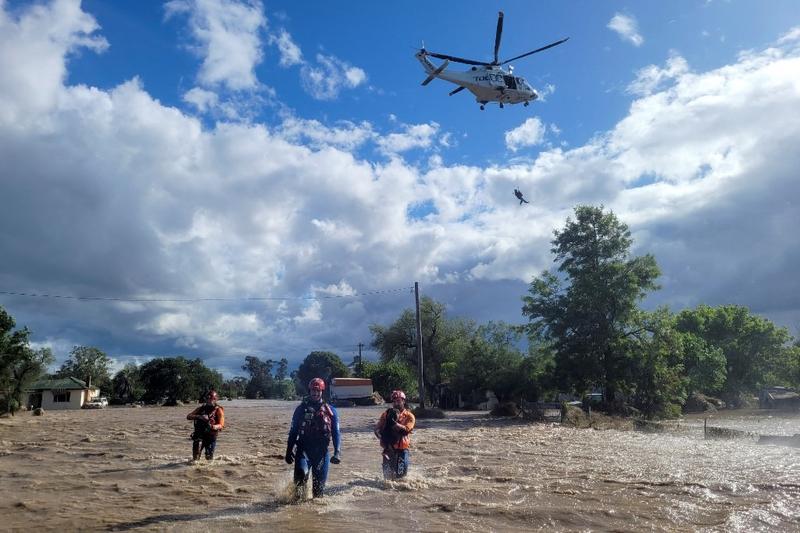 This handout photograph taken on Nov 14, 2022 and released by New South Wales State Emergency Service (SES) shows officials efforting in rescue work in the flooded towns around the overflowing Wyangala Dam near Cowra. (PHOTO / NSW STATE EMERGENCY SERVICE / AFP)
This handout photograph taken on Nov 14, 2022 and released by New South Wales State Emergency Service (SES) shows officials efforting in rescue work in the flooded towns around the overflowing Wyangala Dam near Cowra. (PHOTO / NSW STATE EMERGENCY SERVICE / AFP)
SYDNEY - Australia's Bureau of Meteorology on Wednesday issued its analysis of Australia's climate and weather events during 2022, saying that the country has a wetter-and-warmer-than-average 2022.
According to the climate report, Australia's national mean temperature was 0.5 degrees Celsius warmer than the 1961-1990 average, making 2022 the 22nd-warmest year on record (equal to 2006) since national temperature records began in 1910.
Annual maximum temperatures were above average for most of northern Australia, Tasmania and parts of the west coast, while annual minimum temperatures were above or very much above average for most of Australia
Annual maximum temperatures were above average for most of northern Australia, Tasmania and parts of the west coast, while annual minimum temperatures were above or very much above average for most of Australia.
ALSO READ: Australia: La Nina wet weather system slowly weakening
Besides, the 587.8 mm of rainfall was 26 percent above the 1961-1990 annual average, making 2022 the ninth-wettest year on record since the national rainfall dataset commenced in 1900.
Spring in 2022 was the second-wettest on record for Australia and the wettest on record for the Murray-Darling Basin, for New South Wales and for Victoria.
The report also noted that rainfall was very much above average for the south-eastern quarter of the mainland, where persistent rain saw significant flooding affecting large areas multiple times during the year.
The main climate influences active during 2022 were La Nina, which persisted through summer 2021-22, dissipated during autumn, then re-emerged in early September and continued through the end of 2022.
READ MORE: Australia battles floods as frustration swells over slow relief
It is only the fourth time that three La Nina events in a row have been observed in the Bureau record.


